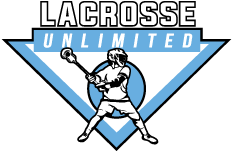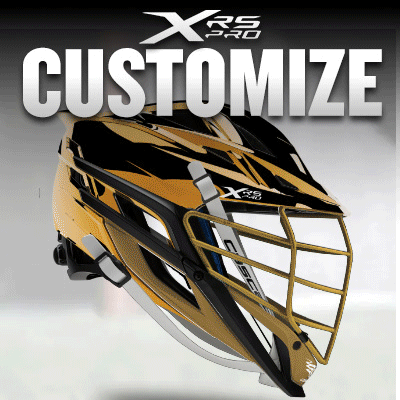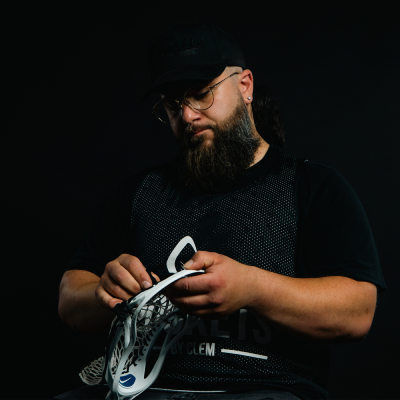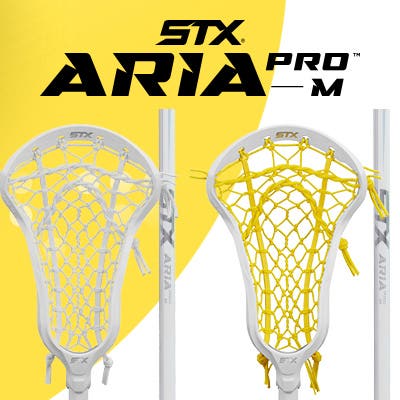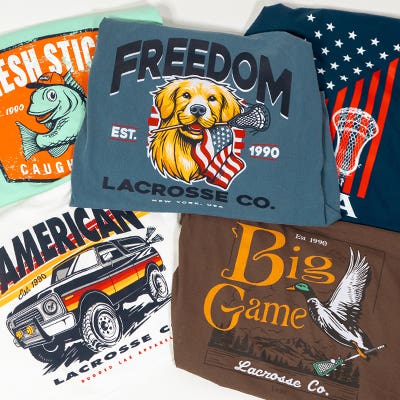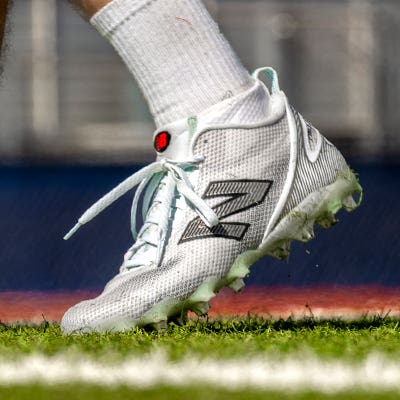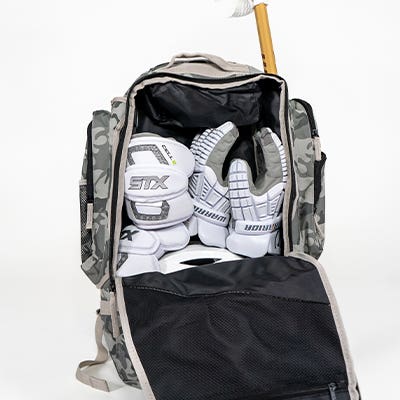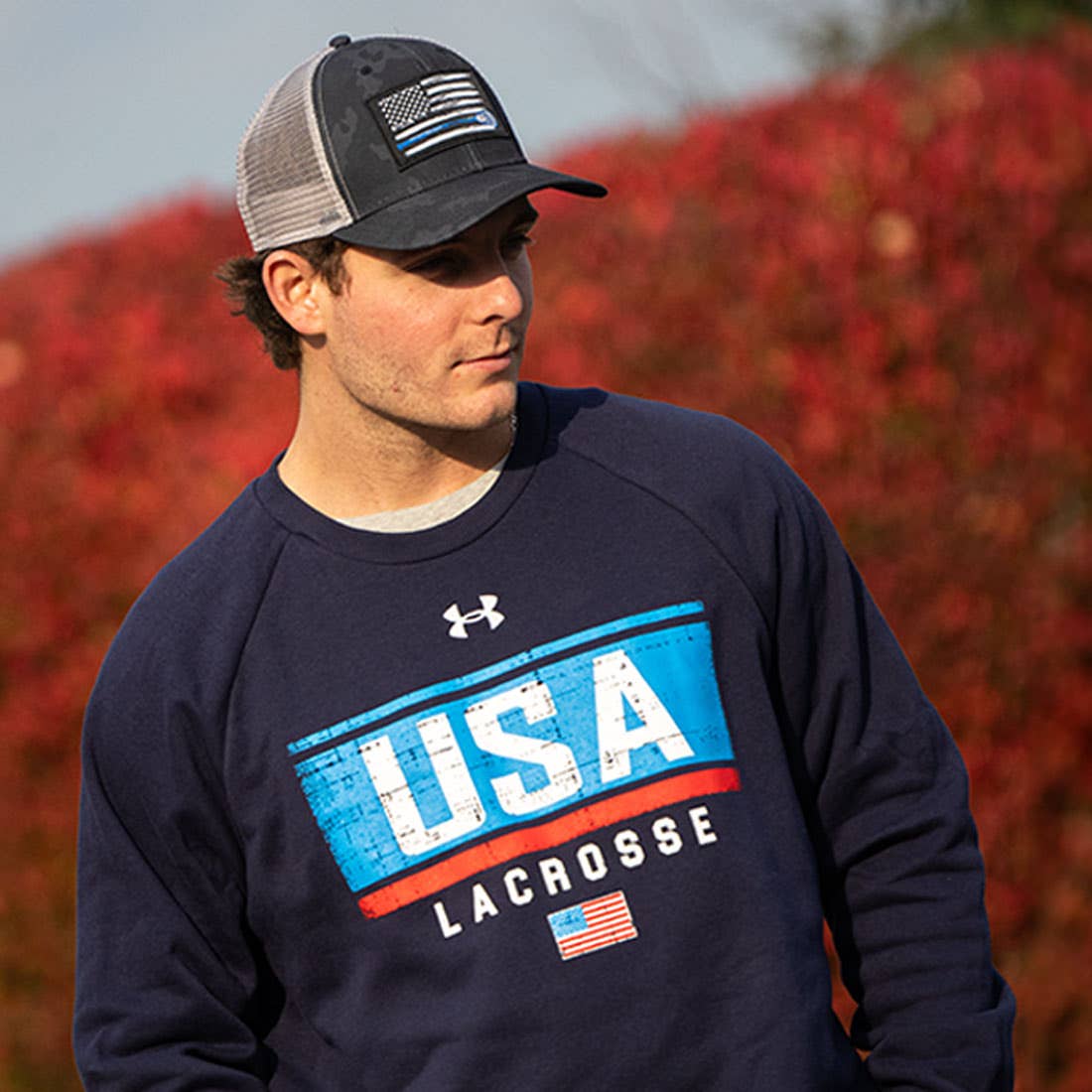
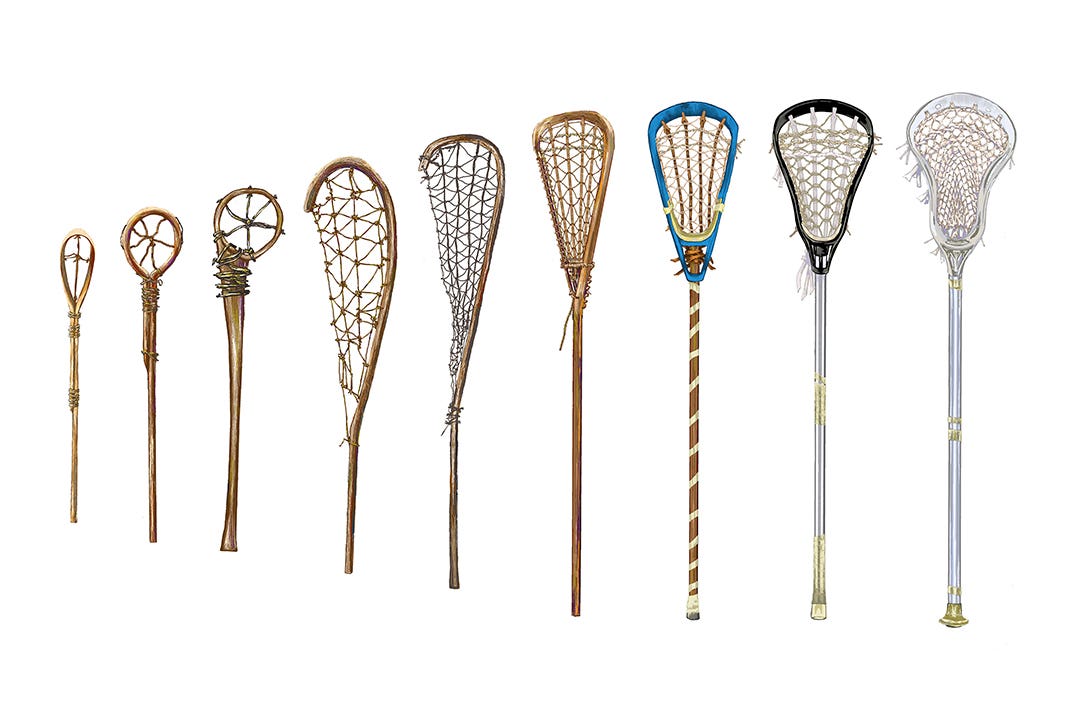
P.O.V: You’re as green to lacrosse as can be. You walk into a Lacrosse Unlimited (or one of our competitors – but hopefully not), and you have no idea what you are looking for, or looking at for that matter. You’re more confused than Abbott and Costello trying to figure out whose where on a baseball diamond. It’s overwhelming and stressful, and we’ve all been there at one point. But that’s exactly where we step in to help – our employees are experts in the field of lacrosse and can help you make decisions to best suit your needs. As prep, we’ve got some info here for you, just to give you an idea before heading in there.
HEADS
First up is the head of your lacrosse stick, and there are endless directions you can go with this. You have to pay attention to the features of each model, as companies target specific products for specific positions. For example, if you’re a defenseman, you want a head that is stiff and won’t bend out of shape on you. You’re going to constantly be checking your opponent’s hands and stick, and if you use a flimsy head, it may become deformed and affect your catching/passing and groundballs, or even break completely; but a stiffer model will maintain its structure in spite of the contact. Check out all of our defensive options here. If you are an attackman, you want a head that has a tight shape to it. Choosing a tight shape will help you with ball security while dodging and being checked. However, at the same time, your head needs to be strong enough to handle the checks your defender is throwing at you. If it is too flimsy, the ball will bounce around in your pocket and you can risk getting stripped, or it could break all together. As a midfielder, you have a little more wiggle room with your choices. If you are more of a defensive middie, you’ll want something stiffer to handle your checks. If you’re more of an offensive middie, we would recommend something a little more pinched and flexible for dodging, feeding and shooting. Really, as a middie you have the leeway to choose what suits you best and what you feel amplifies your performance as you get more experience. Check out our attack and middie heads here. There are even specific options for faceoff players. Faceoff heads are generally incredibly flexible so the faceoff player can use the head to leverage their weight into their opponent to gain position – and ultimately possession – of the ball off the first whistle. You also have the option to customize your head. You can dye it a variety of colors and styles, and you can take a look here at all of our custom dyes to see all of the options available. Dying won’t change the function of your stick, but it can be a good way to flash your skills on the field.
STRINGING
The guy who knows how to string is like the guy at school with a pack of gum – everyone’s friend. It’s not an easy skill and if you don’t know how to string there are many ways to learn, but you can just visit your local Lacrosse Unlimited and get your stick strung by one of our experts. You start this process by selecting your mesh. There are softer and firmer meshes. A softer mesh will allow for a deeper pocket, but can lead to bagging and the possibility of an illegal pocket. A firmer mesh may lack in hold but will prove to be more consistent. You can check out all of our different styles of mesh right here. Next up is the sidewall strings. The sidewall is what connects the mesh, to the head. The sidewall is also what forms your pocket. There are many different variations on how to string up a pocket. The three types of pockets are high, medium, or low pocket. A high pocket is great for control. Not only will a high pocket allow you to quickly control ground balls, it attributes more accuracy to passing and outside shooting. A medium pocket is great for the multi-faceted player. It offers more hold for dodging than the high pocket, but still offers control and accuracy for a more rounded player. A low pocket is great for a frequent dodger, as it allows the ball to sit low in the head where it is most pinched, offering more protection from checks and decreasing the chances of being stripped. Lastly, in terms of stringing is your shooting strings. The shooting string – as the name suggests – affects how you pass and shoot the ball. The number of shooters is really up to the player: Some players use anywhere from 0-3 shooters. It is really a process of trial and error. Simply put, the more strings you have, the less power you’ll have on the release of your shots/passes (but this is a vast oversimplification). Pop over to our site check out all of our different colors and styles of strings right here.
The sidewall is what connects the mesh, to the head. The sidewall is also what forms your pocket. There are many different variations on how to string up a pocket. The three types of pockets are high, medium, or low pocket. A high pocket is great for control. Not only will a high pocket allow you to quickly control ground balls, it attributes more accuracy to passing and outside shooting. A medium pocket is great for the multi-faceted player. It offers more hold for dodging than the high pocket, but still offers control and accuracy for a more rounded player. A low pocket is great for a frequent dodger, as it allows the ball to sit low in the head where it is most pinched, offering more protection from checks and decreasing the chances of being stripped. Lastly, in terms of stringing is your shooting strings. The shooting string – as the name suggests – affects how you pass and shoot the ball. The number of shooters is really up to the player: Some players use anywhere from 0-3 shooters. It is really a process of trial and error. Simply put, the more strings you have, the less power you’ll have on the release of your shots/passes (but this is a vast oversimplification). Pop over to our site check out all of our different colors and styles of strings right here.
SHAFTS/HANDLES
The last major component to building your stick is the handle. Believe it or not, even the handles come in all different shapes. Some are more rounded, and some are more hexagonal. It all depends on what feels better for your grip. Just like with the heads, each handles have certain attributes to your position. Certain handles better suited for attackmen are more flexible to provide power for quick shots and feeds. Midfielder’s will also look for similar flex in their shafts for offensive performance, but also may want to balance with some strength for rides/clears and the possibility of playing both sides of the ball. You want a handle that is strong enough to take on some defensive play, while also giving you that flex that the attackman are getting to get quick shots and feeds off on the offensive end. Defensively, you are going to want a strong handle. You want to be able to throw consistent, heavy and strong checks without worrying about your handle breaking. You want to be the guy who goes out and gets the ball back from the other team. The best way to see what works best for you is to get to your local LU and get an actual in-person feel for the shaft you are looking to buy. Check out all of our handles here and find which ones catch your eye first.
The final part in customizing your stick is the taping. While tape definitely helps your performance, it’s not necessary for functionality. Basically, tape greatly improves your grip, and can help increase your shooting strength, as well as your ability to make long passes, and just gives you more of an overall comfortable feel with the stick in your hand. To start, figure out where you like to have your hands while catching, passing, and shooting. Generally as a starting point, you’ll want your tape job to extend up your stick about an inch above where you like to place your hand during a standard pass, but again, this is all about “feel” and personal preference, and can be adjusted as needed. As you gain more experience, there are different styles such as the standard quarter, the candy cane, the criss cross, and the half box. There are also different types of tape with different feels. Take a look at our “How to Tape Your Stick” article for more information.
So, now you have the basics for setting up your stick. All that there is left to do is get out there, tune-up your skills and adjust anything as needed to get that perfect top corner snipe, no look dime or yard sale check.

